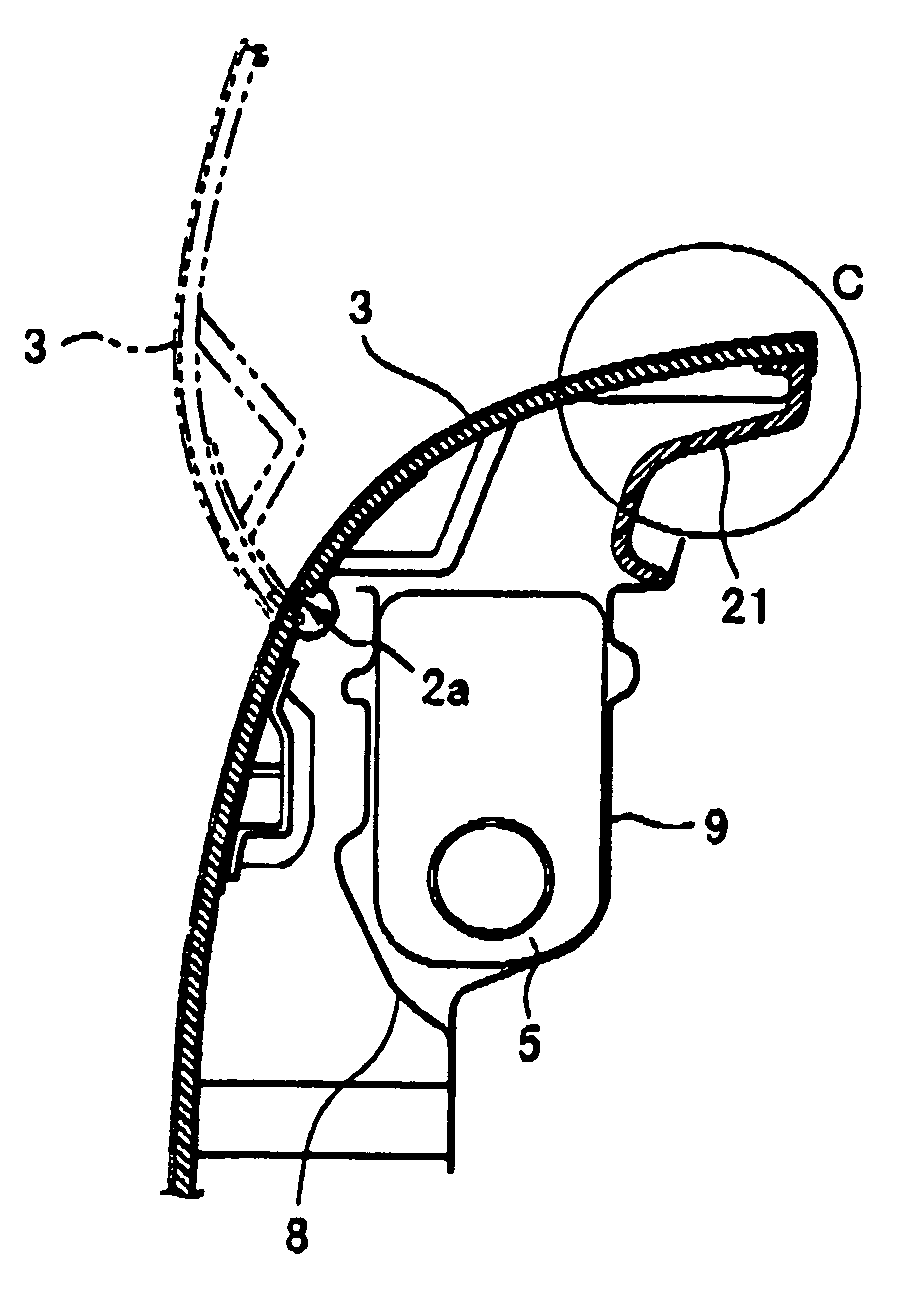Vehicle interior parts
a technology for interior parts and vehicles, applied in the direction of vehicular safety arrangments, vehicle components, pedestrian/occupant safety arrangements, etc., can solve problems such as appearance degrade or misalignment of interior components
- Summary
- Abstract
- Description
- Claims
- Application Information
AI Technical Summary
Benefits of technology
Problems solved by technology
Method used
Image
Examples
first embodiment
[0056]In order for the first locking means and the second locking means according to the first embodiment to have their own functions, thereby attaining an effect of the invention, the fitting width D1 of the hook 32 (see FIG. 5B) and intervals between the disposed ribs 31 need to be adjusted in accordance with a layout of the vehicle interior and a design of the interior component to which the present invention is applied.
[0057]FIG. 7 is a schematic view of the area in which the ribs 31 are disposed at a longer interval and in which the hook 32 is disposed at the center. Distance D2 between the hook 32 and the rib 31 is set to a design parameter. With the interior component made of hard material, there is a need to reduce the fitting width D1 of the hook 32 and to widen the distance D2 between the hook 32 and the rib 31. Where the present invention is applied to the door trim 1 molded by blending a polycarbonate (PC) resin and an acrylonitrile butadiene styrene (ABS) resin, in a ca...
second embodiment
[0058]FIG. 8A is a schematic view showing third locking means according to another embodiment of the present invention. The third locking means is made up of ribs 31a serving as a third locking piece, and rib receivers 34 serving as a third engagement portion. The ribs 31a are provided at the expanding portion 3. The rib receivers 34 are provided at the waist garnish 21 serving as a fixed portion with which the rim of the expanding portion 3 comes into contact. The rib receivers 34 receive the ribs 31a to lock movement of the expanding portion 3 in the turning radial direction. As shown in FIG. 8A, in a state in which the expanding portion 3 is closed, the rib 31a is in abutment with the distal end of the rib receiver 34 to restrict the expanding portion 3 from moving in the turning radial direction, i.e., to the waist garnish 21. On the other hand, movement of the expanding portion 3 is not limited in the turning direction. Therefore, like the second locking means described above, ...
third embodiment
[0060]FIG. 9 is a schematic view of a door trim 101 as viewed from the interior side of the vehicle. The upper portion of the door trim 101 as the interior component is fixed to a vehicle body panel 122 via a waist garnish 121 attached to the vehicle body panel 122.
[0061]The upper side portion of the waist garnish 121 is in abutment with the upper portion rim of the door trim 1, i.e., the so-called waistline, of the door trim 101. As in the first embodiment, the upper side portion is provided, along a part thereof in contact with a rim of an expanding portion 103, with the first engagement portions (rib receivers 134) for receiving the first locking pieces (ribs 131) as the first locking means and second engagement portions (hook receivers 35) for receiving second locking pieces (hooks 132) as the second locking means. In this embodiment, the first locking means is made up of the ribs 131 and the rib receivers 134, whereas the second locking means is made up of the hooks 132 and the...
PUM
 Login to View More
Login to View More Abstract
Description
Claims
Application Information
 Login to View More
Login to View More - R&D
- Intellectual Property
- Life Sciences
- Materials
- Tech Scout
- Unparalleled Data Quality
- Higher Quality Content
- 60% Fewer Hallucinations
Browse by: Latest US Patents, China's latest patents, Technical Efficacy Thesaurus, Application Domain, Technology Topic, Popular Technical Reports.
© 2025 PatSnap. All rights reserved.Legal|Privacy policy|Modern Slavery Act Transparency Statement|Sitemap|About US| Contact US: help@patsnap.com



